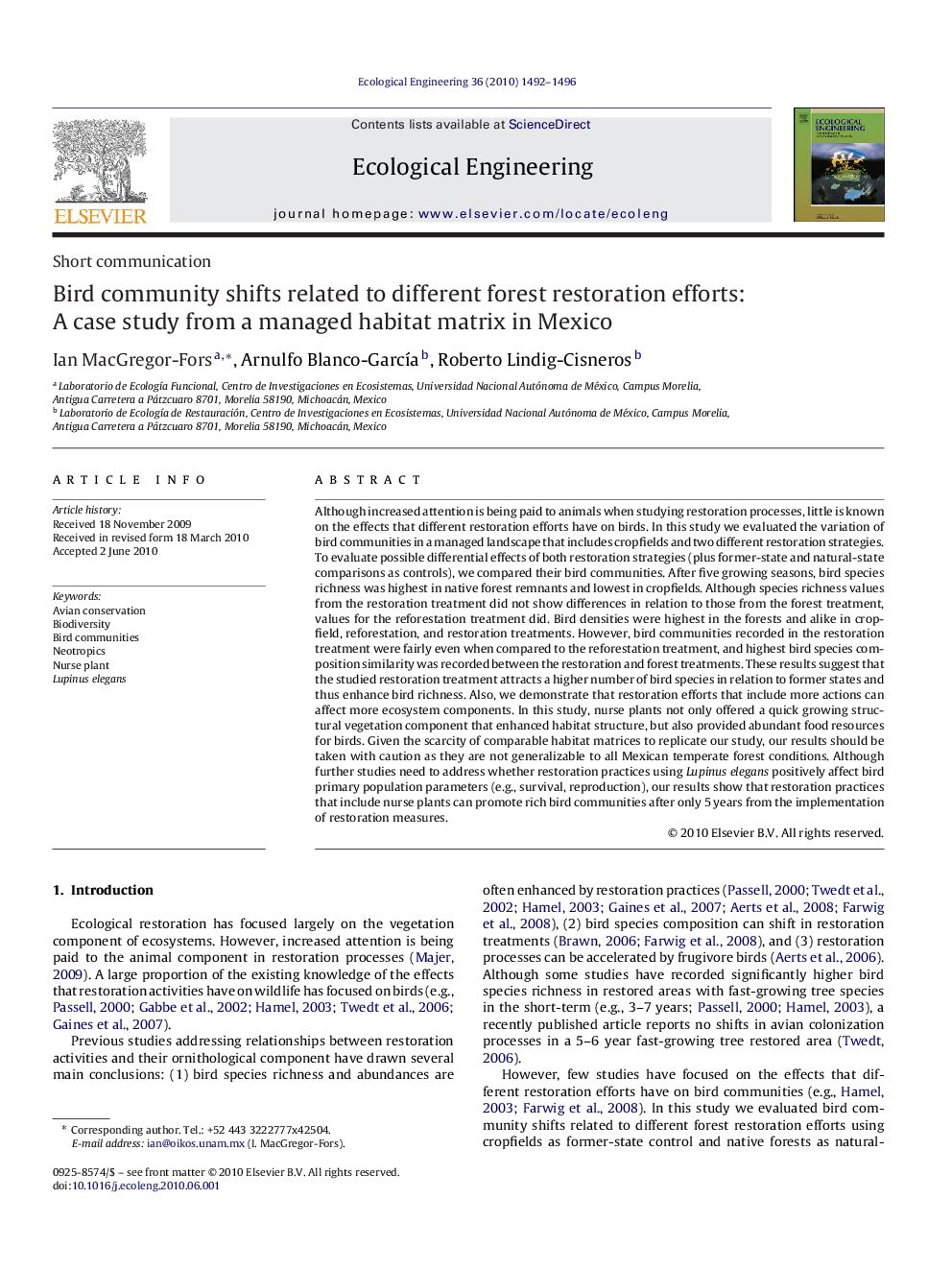| Article ID | Journal | Published Year | Pages | File Type |
|---|---|---|---|---|
| 4390600 | Ecological Engineering | 2010 | 5 Pages |
Although increased attention is being paid to animals when studying restoration processes, little is known on the effects that different restoration efforts have on birds. In this study we evaluated the variation of bird communities in a managed landscape that includes cropfields and two different restoration strategies. To evaluate possible differential effects of both restoration strategies (plus former-state and natural-state comparisons as controls), we compared their bird communities. After five growing seasons, bird species richness was highest in native forest remnants and lowest in cropfields. Although species richness values from the restoration treatment did not show differences in relation to those from the forest treatment, values for the reforestation treatment did. Bird densities were highest in the forests and alike in cropfield, reforestation, and restoration treatments. However, bird communities recorded in the restoration treatment were fairly even when compared to the reforestation treatment, and highest bird species composition similarity was recorded between the restoration and forest treatments. These results suggest that the studied restoration treatment attracts a higher number of bird species in relation to former states and thus enhance bird richness. Also, we demonstrate that restoration efforts that include more actions can affect more ecosystem components. In this study, nurse plants not only offered a quick growing structural vegetation component that enhanced habitat structure, but also provided abundant food resources for birds. Given the scarcity of comparable habitat matrices to replicate our study, our results should be taken with caution as they are not generalizable to all Mexican temperate forest conditions. Although further studies need to address whether restoration practices using Lupinus elegans positively affect bird primary population parameters (e.g., survival, reproduction), our results show that restoration practices that include nurse plants can promote rich bird communities after only 5 years from the implementation of restoration measures.
